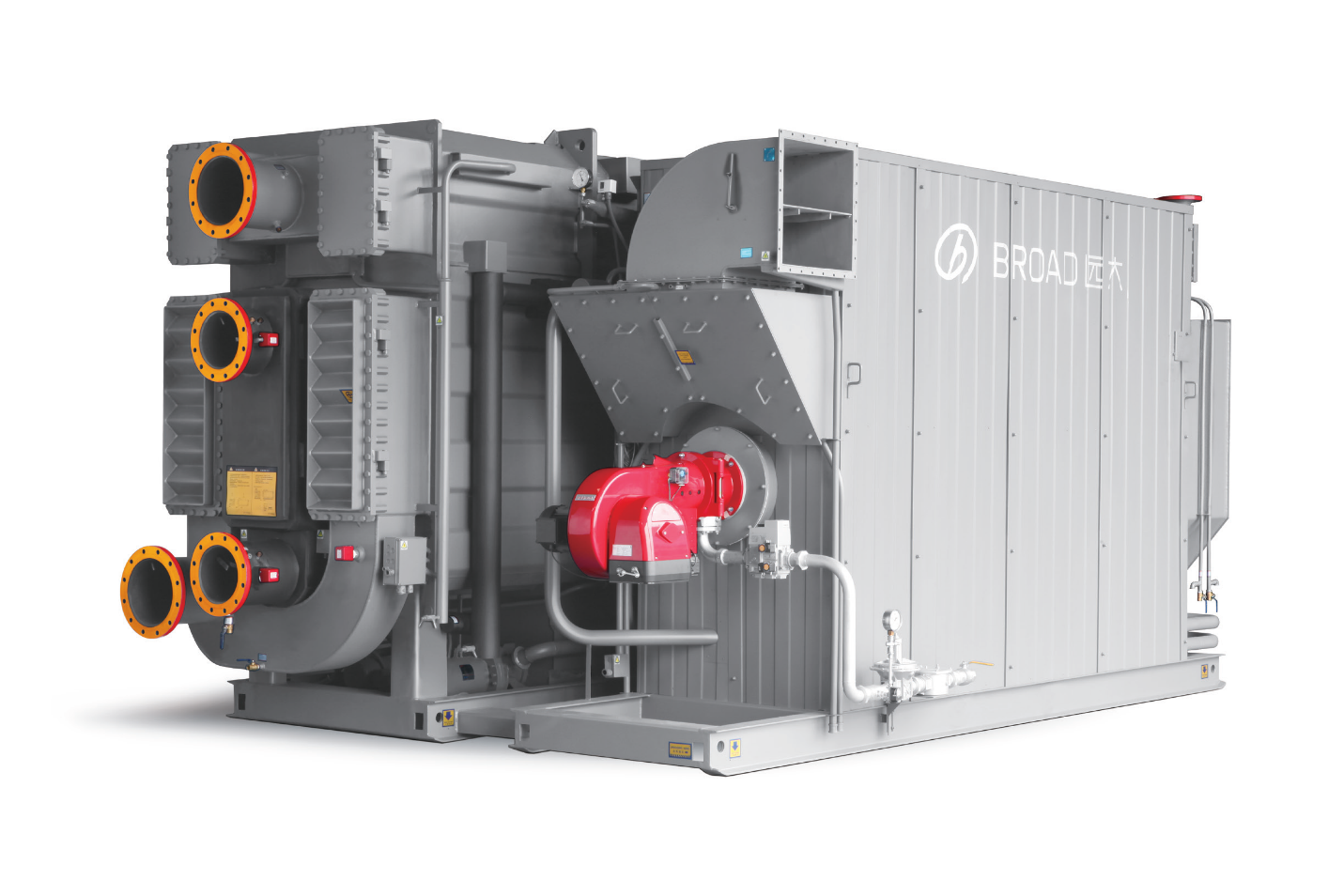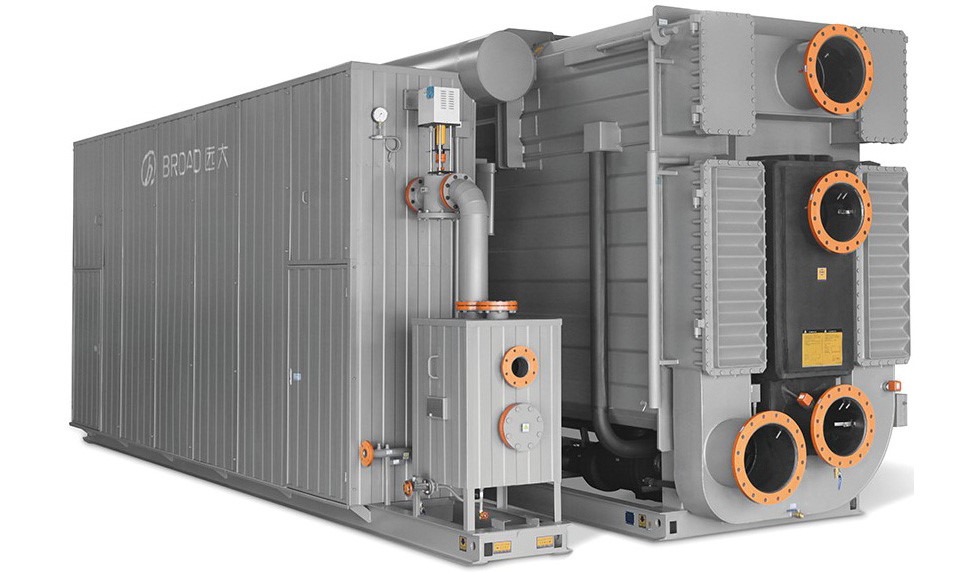Direct Fired Chiller

Waste Heat Chiller

The input heat energy heats LiBr solution to 140℃ and generate vapor, which is then condensed into water by cooling water. When the refrigerant water enters evaporator (in high vacuum condition), its temperature goes down immediately to 5℃. And it is sprayed over the evaporator tubes, and chilled water from 14℃ drop down to 7℃ to make cooling. The refrigerant water absorbs heat from air conditioning system and evaporates, then is absorbed by concentrated LiBr solution from the generators. The cooling water takes away the heat and rejects it into the air. Diluted solution is pumped into HTG and LTG separately to be heated to begin the process all over again.
Notes: Lithium Bromide is a salt of strong hygroscopicity, nontoxic and harmless, with no greenhouse effect and no damage to the ozone layer.
The input heat energy heats the LiBr solution. The vapor produced by the solution heats the heating water or hot water in tubes, while condensate returns to the solution to be heated and the cycle repeats. As “separate heating” is adopted, the heating cycle becomes very simple, just like a vacuum boiler. Therefore, the lifespan of the chiller can be doubled. A separate heat exchanger can provide dedicated hot water while cooling or heating operation is stopped.
So, only BROAD has the unique technology in the world that can realize “three functions in one unit”: cooling, heating and hot water simultaneously or dedicatedly.
- Cooling, heating, hot water (seperately or simultaneously)
- Provide chilled/heating water for central air conditioning system
- Produce chilled water over 5℃ and heating water below 95℃.
- 233~11,630kW (66~3,307Rt)
- Diesel, LPG, Natural Gas and Town Gas (for direct fired chillers).
- Waste heat from power generation or industrial waste streams i.e steam, hot water, exhaust, etc. (for waste heat chillers).
